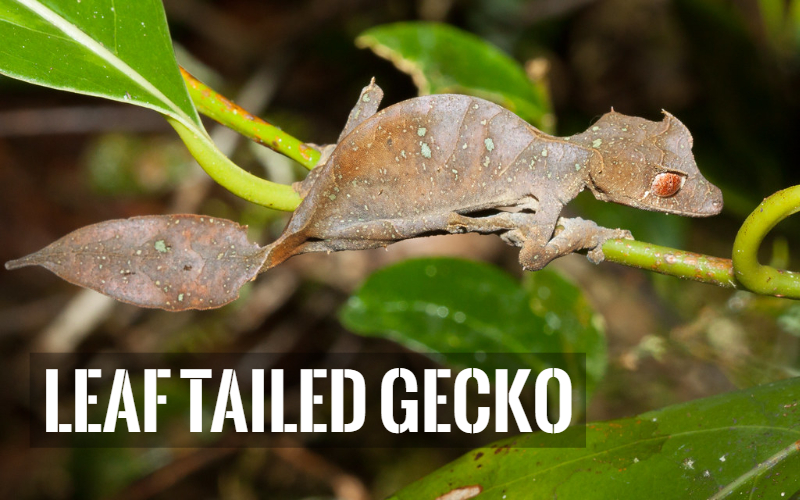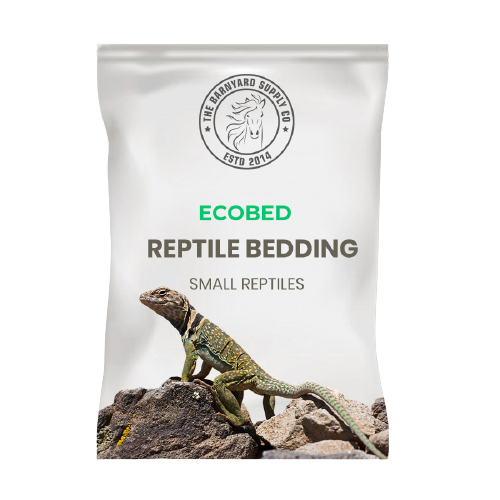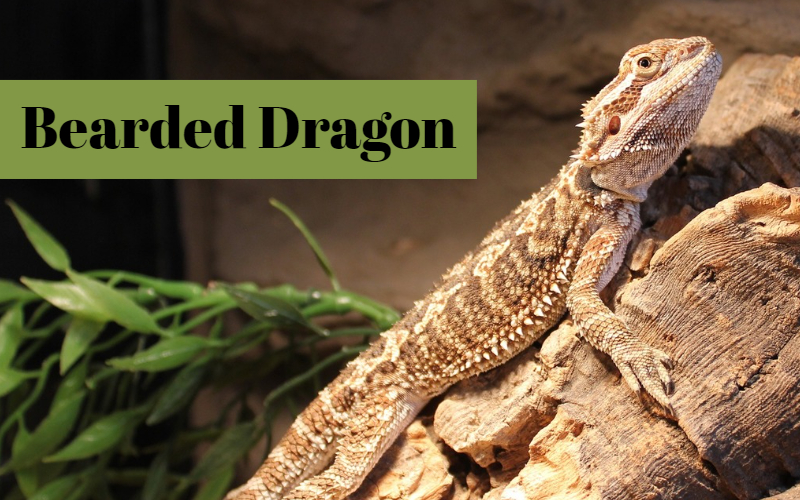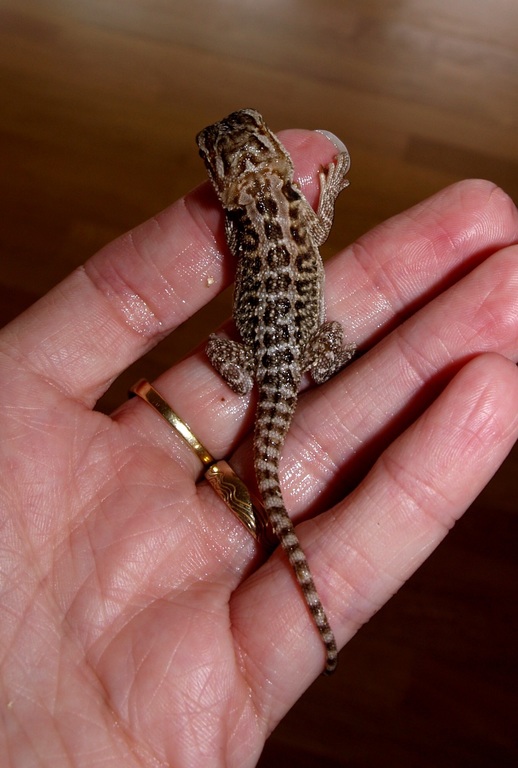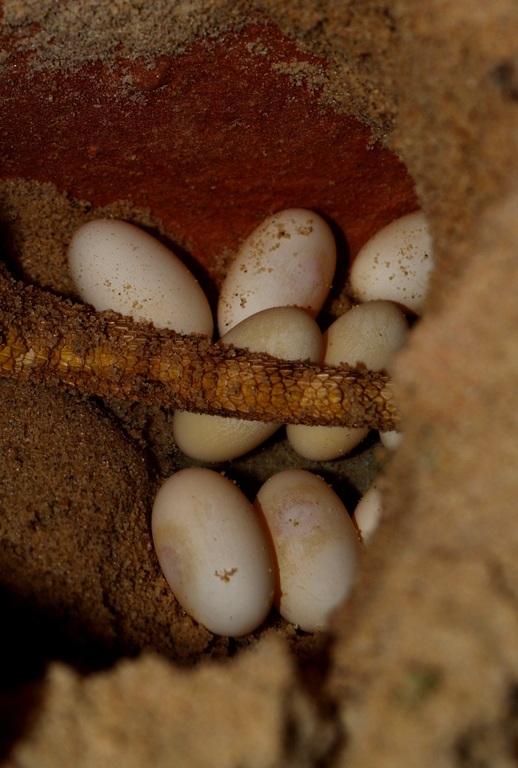Reptile caring is one such rarely seen habit that intrigues one fondness. For a person to raise them in full conscience, needs much thought as their possible raising is not as simple as it appears, read more for a complete guide on each pet to raise them more thoughfully.
Once you have decided on a Leaf-tailed Gecko as a pet, you will want to have everything prepared before bringing him home. Your pet needs a proper house and environment that is both safe and large enough for them. He will also need all the foods that will give him a nutritious diet. This care sheet helps you learn how to take proper care for your Leaf-tailed Gecko.
Appearance and Behaviour
Leaf-tailed geckos are a nocturnal, arboreal group of more than 18 species native to Madagascar. Their preferred habitat is tropical forest, and depending on the species, they can be found in bushes as well as high in the trees.
Depending on the species, leaf-tailed geckos can be as little as 3” and as large as 13”. Despite the fact that colour and pattern differ from one species to the next, they all feature stunningly realistic camouflage. Some are bark/lichen imitators, some are dead leaf imitators, and one is a bamboo imitator!
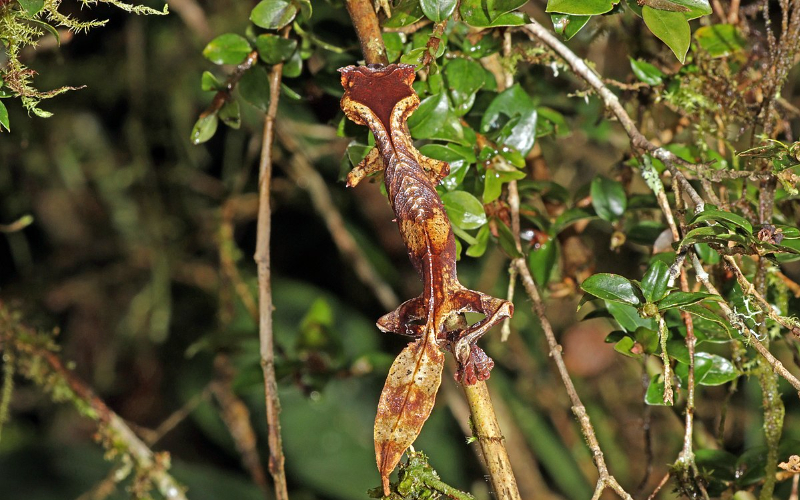
Leaf-tailed geckos are advanced-level pet reptiles because they are sensitive to bad husbandry, get upset easily, and require a naturalistic cage to survive. They can survive for up to 15 years if properly cared for.
Best temperature for leaf-tailed geckos
A low basking temperature of 80-84°F is recommended for leaf-tailed geckos, as measured using a digital probe thermometer positioned in the basking area. The temperature in the rest of the cage should be between 68 and 76 degrees Fahrenheit, with nighttime temperatures as low as 62 degrees Fahrenheit. Heat stress is particularly common with leaf-tailed geckos, so make sure yours always has a way to cool off!
Use a low-wattage incandescent lamp to keep your gecko warm. Experts consider white heat lamps to be the finest way to mimic the warmth of sunshine indoors and a superior kind of reptile heating. Ceramic heat emitters, red bulbs, and blue bulbs are not as effective as incandescent bulbs. It is not necessary to heat the room at night.
Best humidity levels for leaf-tailed geckos
Since leaf-tailed geckos are tropical animals, their enclosure should have a high level of humidity: 60-80% on average. If you’re maintaining Uroplatus phantasticus, however, higher amounts of 90-100 percent will be required at night to keep them properly hydrated. Humidity should be measured using a digital probe hygrometer, which should be placed in the terrarium’s centre.
Mist your gecko’s enclosure with a spray bottle 1-2 times per day to increase humidity. Mist every evening, then again in the morning if necessary. Aside from increasing humidity, this also provides a crucial supply of drinking water for your gecko! Use a cool-mist humidifier with a hygrostat if you’re having difficulties maintaining proper humidity levels.
What to feed to a leaf-tailed gecko
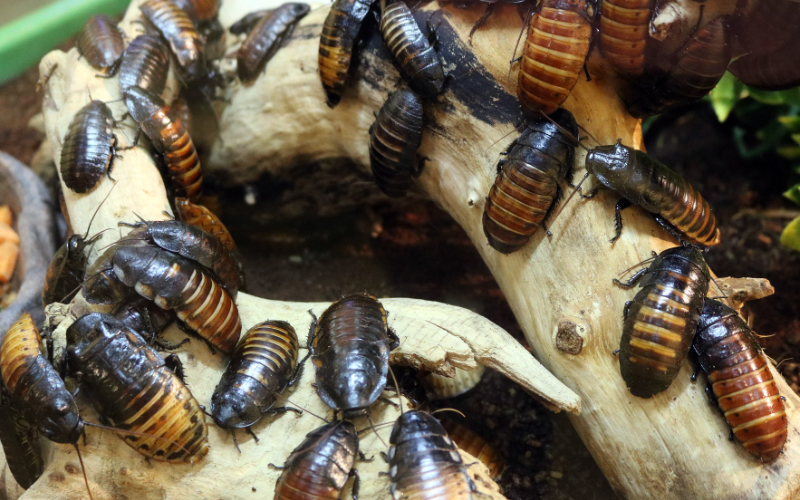
Leaf-tails require a diverse diet to survive. Provide a wide range of live reptile food, such as roaches, crickets, super worms, and wax worms. To prevent worms from burrowing into the substrate, place them on a plate or jar lid. Consider breeding female pinkish mice during the breeding season.
How to handle your leaf-tailed gecko
In general, reptiles do not love stroking and handling as much as dogs and cats do. Leaf-tailed geckos are one of the reptiles that should be left alone rather than handled on a regular basis. Try hand-feeding your pet with a pair of feeding tweezers if you wish to interact with it.
Best substrate for leaf-tailed geckos
Placing a layer of realistic substrate will aid in maintaining proper humidity levels and give a natural cushion for them when diving for insects. It also improves the aesthetics of your enclosure! Humidity can also be improved by layering clean, chemical-free leaf litter on top of the substrate. Soil and Orchid bark can be used. Coconut fiber is one of the best options for your reptile. We recommend EcoBed Reptile Bedding, which is an absolutely organic and chemical free bedding option.
Every 3-4 months, the substrate should be entirely updated and should be at least 2” deep. Poop and urates, as well as polluted substrate, should be removed on a daily basis.
Substrate Types
Coconut Fiber
For Leaf-tailed geckos, a coconut fiber-based substrate is a wise option. Coconut is one of the most durable substrates known. It forms a cluster around the droppings, making cleanup a bit easier for you, the owner. Coconut has antibacterial properties as well. It will capture and even inhibit bacteria found in faeces. It was created without the use of any chemicals and is also environmentally friendly.
Advantages:
• Very natural look
• Self-cleaning and easy cleanup of droppings
• Affordable and good value
Disadvantages:
• May attract mites and bugs over time
Soil Mixture
Soil Mixture is a soil-like substrate manufactured from a unique combination of peat moss, soil, sand, and carbon that provides the ideal environment for live-planted realistic or bioactive tropical terrariums. It encourages natural activities like burrowing and egg-laying since it mimics the soil found in tropical reptiles’ natural habitats. It’s also possible to add more sand to make it ideal for desert setups!
Advantages:
· Create a natural look.
· Reptiles like to borrow it.
Disadvantages:
· May create skin infection.
Orchid Bark
Orchid bark makes an excellent naturalistic substrate for tropical plants and terrariums. It adds a variety of advantages to more thorough mixtures and can also be used as a stand-alone substrate for particular plants.
Advantages:
· It’s a natural material and looks and feels authentic.
· Aerating soil, resisting compaction and providing drainage.
· Increases water retention.
· It’s sustainably sourced.
Disadvantages:
· It will eventually break down.
· It has an acidifying effect
Fun Facts
- Leaf-tailed geckos, like most geckos, lack eyelids. Instead, they wipe and moisturise their eyes with their tongues.
- Leaf-tailed geckos, like most geckos, can walk up vertical surfaces thanks to millions of minute “hairs” called setae on their toe pads. Uroplatus has little claws to help them navigate about when setae fail, allowing them to hang to branches upside down to get the best angle on a potential bug feast.
- Leaf-tailed geckos, like most geckos, lack eyelids. Instead, they wipe and moisturise their eyes with their tongues.
- Leaf-tailed geckos, like most geckos, can walk up vertical surfaces thanks to millions of minute “hairs” called setae on their toe pads. Uroplatus has little claws to help them navigate about when setae fail, allowing them to hang to branches upside down to get the best angle on a potential bug feast.

